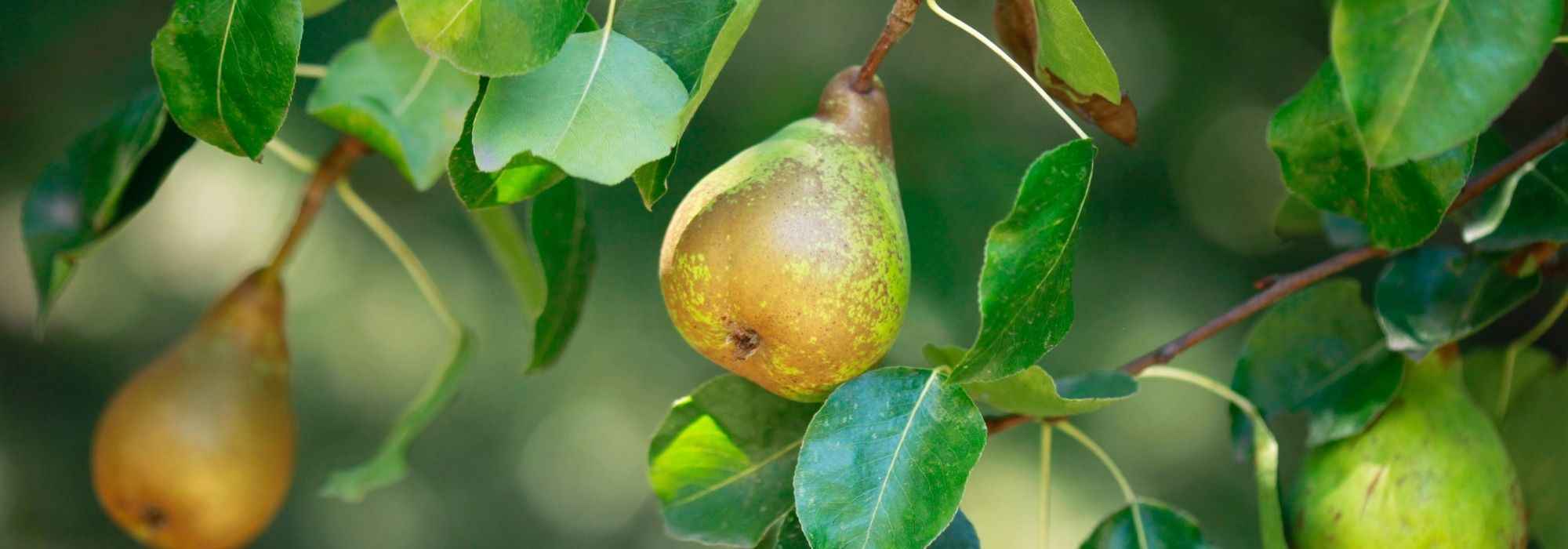
Pear trees: the best varieties
Fruits to savour endlessly: fresh, cooked, as sorbet!
Summary
Common pear tree (Pyrus communis L.) is a fruit tree in the Rosaceae family (like the peach tree) cultivated for its delicious, delicate fruit: pear. Native to temperate regions of Europe, pear trees are widespread and popular in French orchards. Bon Chrétien William’s, Conférence, Doyenné du Comice — with hundreds of pear varieties available, choosing can be difficult.
Discover our selection of pear trees — the best varieties for your garden!
Pear tree 'William's Bon Chrétien'
Widely cultivated in France, the Pear ‘William’s’, also called ‘Bon Chrétien William’s’, is a variety notable for ease of cultivation and good yield.
Its white flowers flushed with pink appear after frosts (April), its fruits reach ripeness as early as August: yellow, soft, sweet and fragrant fruits about 7 cm across. William’s pear is well known and readily available in shops. You know its sweet flavour, ideal for eating fresh (or for cooking: jam, compote, pastries)
This pear variety is partially self-fertile, meaning cross-pollination with another pear tree will improve fruiting. Its ideal binary name: pear ‘Conference’ or pear ‘Doyenné du Comice’.
William’s pear adapts to most French regions with good disease resistance. Provide ample space to accommodate its majestic habit: 6 m in height by 4.50 m spread.
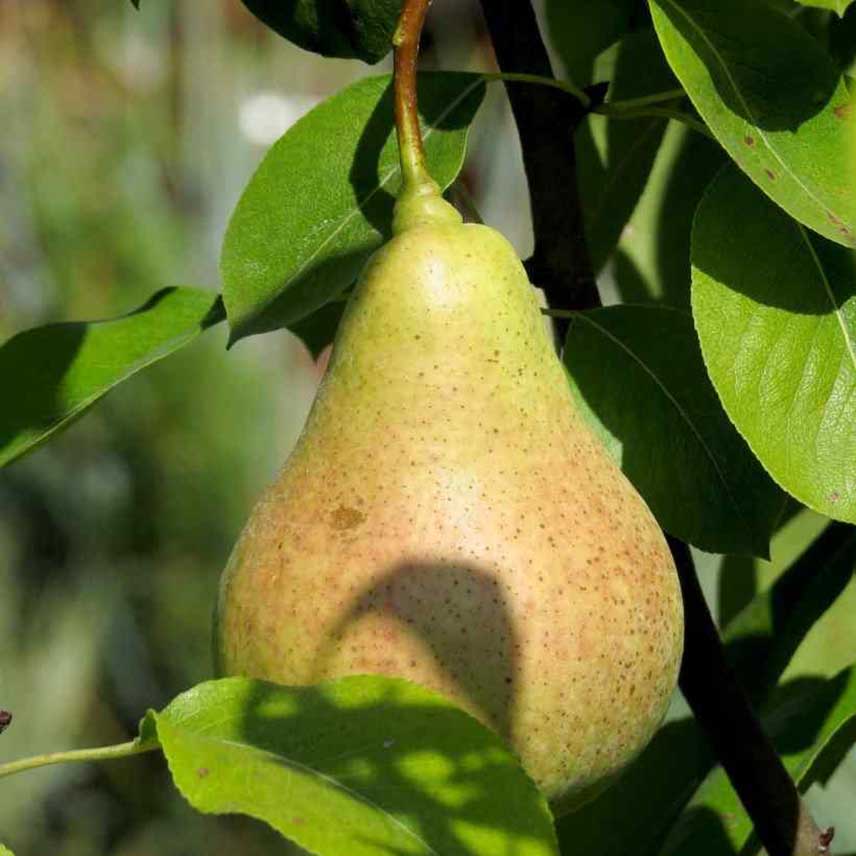
Pyrus communis ‘William’s Bon Chrétien’
Note: do not pair with pear ‘Louise Bonne d’Avranches’ and/or pear ‘Williams Rouge’.
You may also read
Pear tree: planting, pruning and carePear tree 'Conference'
Very hardy and not very susceptible to disease, Pyrus communis ‘Conférence’ pear tree adapts to all regions of France.
Its late flowering (early April) decorates your garden with pale pink-tinged white blooms. The long fruits (8–9 cm), with a recognisable teardrop shape, are ready to pick from late September. The pear skin is green marbled with brown; the flesh, a beautiful creamy white, is firm, juicy, delicate, slightly tangy and sweet.
Fruits can be eaten fresh and keep very well in a cool, ventilated place (cellar…).
This variety should be planted beside another pear tree to ensure cross-pollination, notably by bees. Ideal neighbour: ‘Doyenné du Comice’. Prefers warmth of a sunny position.
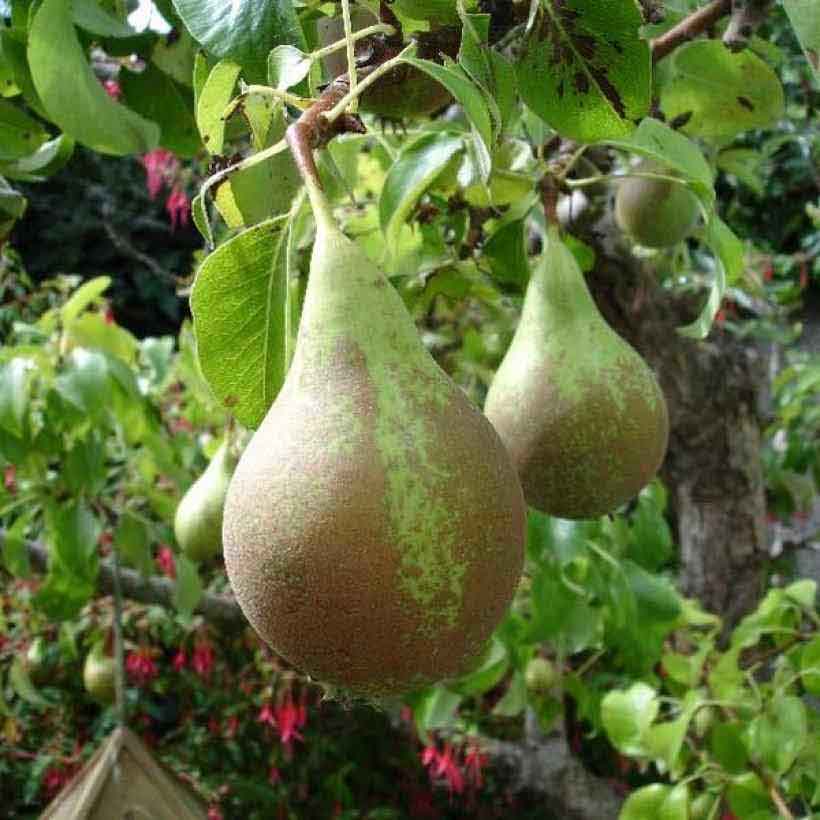
Pyrus communis ‘Conférence’
Note: its firm flesh holds up very well to cooking and is ideal for tarts. ‘Conférence’ variety is often used for pears poached in wine.
Discover other Pear trees
View All →Available in 1 sizes
Available in 1 sizes
Available in 1 sizes
Available in 1 sizes
Available in 1 sizes
Available in 0 sizes
Available in 0 sizes
Available in 1 sizes
Available in 0 sizes
Pear tree 'Doyenné du Comice'
Hardy, disease-resistant, pear tree ‘Doyenné du Comice’ is a safe bet in an orchard. Its large rounded fruits, yellow‑green in colour with speckled skin, have a juicy, fragrant creamy‑white flesh and are much appreciated by gourmets and those with a sweet tooth of all ages. Harvest will take place from the end of September after pink‑white flowering in April.
It is preferable to plant another pear tree nearby to optimise fruiting, such as varieties ‘William’s’ or ‘Conférence’. It can reach 10 metres in height at ripeness.
Note: this variety keeps very well; store in a cool place on wood shelves, stem end up (ideally in a cellar).
Lorène’s tip: this pear is delicious served with a blue‑veined cheese such as Roquefort. Its sweetness and fragrance will balance flavours.
You may also read
Pyrus: planting, pruning and carePear tree 'Marguerite Marillat'
Old and hardy, Pear ‘Marguerite Marillat’ has long been present in French orchards. Fruits have a smooth, thin skin, a magnificent golden-yellow colour marbled with red, and are ready to harvest from early September. White flesh is melting and juicy, with a sweet, delicately fragrant and tangy flavour. White flowers appear from March.
This variety is suitable as table fruit to eat raw or for cooking in desserts, compotes and jam (very large fruits: 9 centimetres for 700 grams).
This old and hardy variety (-15°C) is valued and recognised for easy cultivation with good disease resistance. However, avoid sites exposed to severe frost and cold winds. Good neighbours include pear ‘William’s’, ‘Comtesse de Paris’, ‘Conference’ or ‘Louise Bonne d’Avranches’.
Its tall silhouette, 4 metres high with a 2-metre spread, gives it a slender appearance.

Pyrus communis ‘Marguerite Marillat’
Note: don’t be surprised — this variety is sometimes prone to alternate bearing: flowering and fruiting may occur every other year.
Pear tree 'Comtesse de Paris'
Very fertile and hardy, the Pear tree ‘Comtesse de Paris’ is an ideal candidate for starting an orchard or to serve as a companion to pear trees already in place: excellent pollinating quality and self-fertile, this pear tree can be planted alone in your orchard.
Fragrant white flowers bloom in April, giving way to beautiful round fruits (7 cm diameter) in late October. These fruits are characteristic: thick green skin speckled with brown, hiding a grainy, melting flesh with a spicy flavour.
Fruits picked at ripeness and stored in cool conditions will keep for several months if protected from humidity and heat.
This pear tree remains modest in size, 4 m tall by 3 m wide.
As a self-fertile variety, proximity of other pear trees is not strictly necessary but fruit set will still be improved. Consider pear trees ‘Williams’ or ‘Conference’.
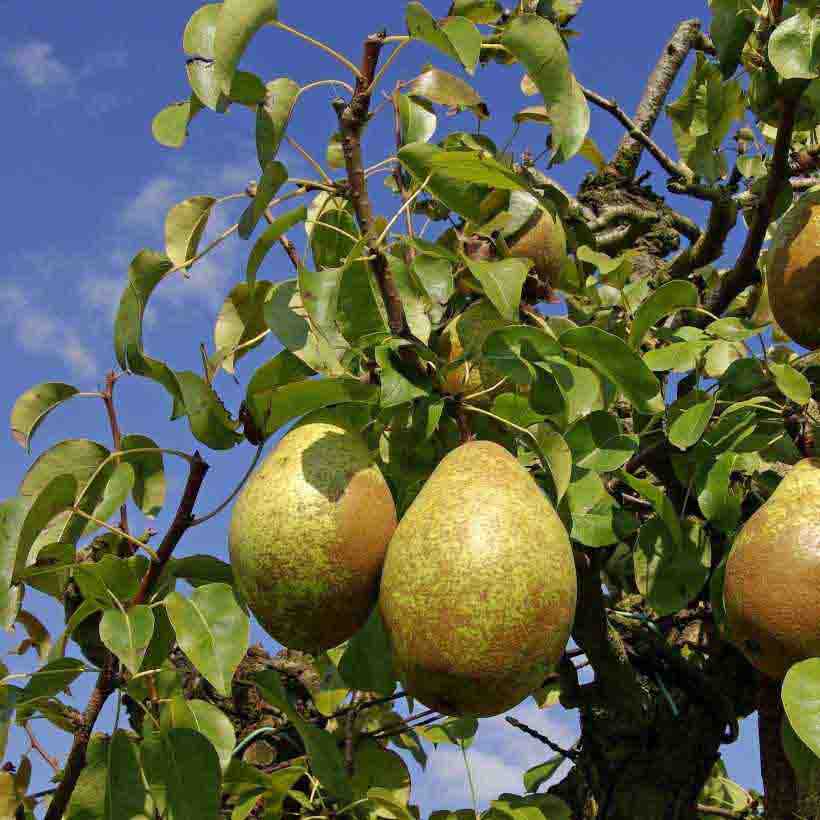
Pyrus communis ‘Comtesse de Paris’
Note: this pear variety is ideal for sweet-and-savoury cooking, accompanying red meat such as game.
Pear tree 'Louise Bonne d’Avranches'
Adapted to climate of all regions, pear tree ‘Louise Bonne d’Avranches’ is a hardy variety (−15 °C), disease-resistant, with good regular production. Fruits are better at altitude. Its white flowers open in March; fruits are medium-sized (6–7 cm diameter), green-yellow and dark red, with a mild, sweet flavour and a fine flesh that tends to become over-ripe (harvest from September).
Tree reaches 6 m in height with 4.5 m spread.
This pear tree is not self-fertile and must therefore be planted next to or within a 50-metre radius of another pollinating pear tree such as ‘William’s’, ‘Conférence’ or ‘Beurre Hardy’.
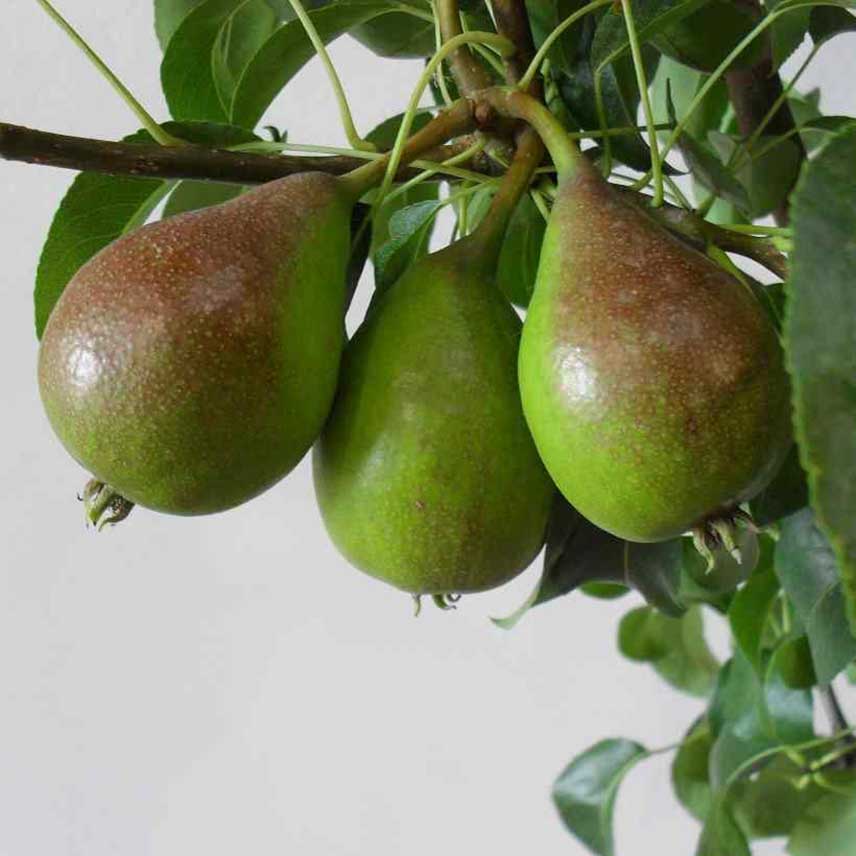
Pyrus communis ‘Louise Bonne d’Avranches’
Fruit can be eaten raw or cooked, for example as “pears in syrup” or “pears in caramel”.
Pear tree 'Angelys'
With good hardiness, Pear tree ‘Angelys’ is a disease-resistant variety with an upright habit (5 metres high by 3 m spread) and easy to grow. Pear tree ‘Angelys’ flowers in April (white flowers) and produces large golden fruits (8 cm in diameter) from October. ‘Angelys’ pears have excellent flavour, with a fine, sweet, slightly tangy and well-balanced flesh that can be stored for several months in cool conditions (cellar).
This variety is not self-fertile and must be planted near a pollinating pear-tree neighbour such as ‘Conference’, ‘Doyenné du Comice’ and ‘William’s’.
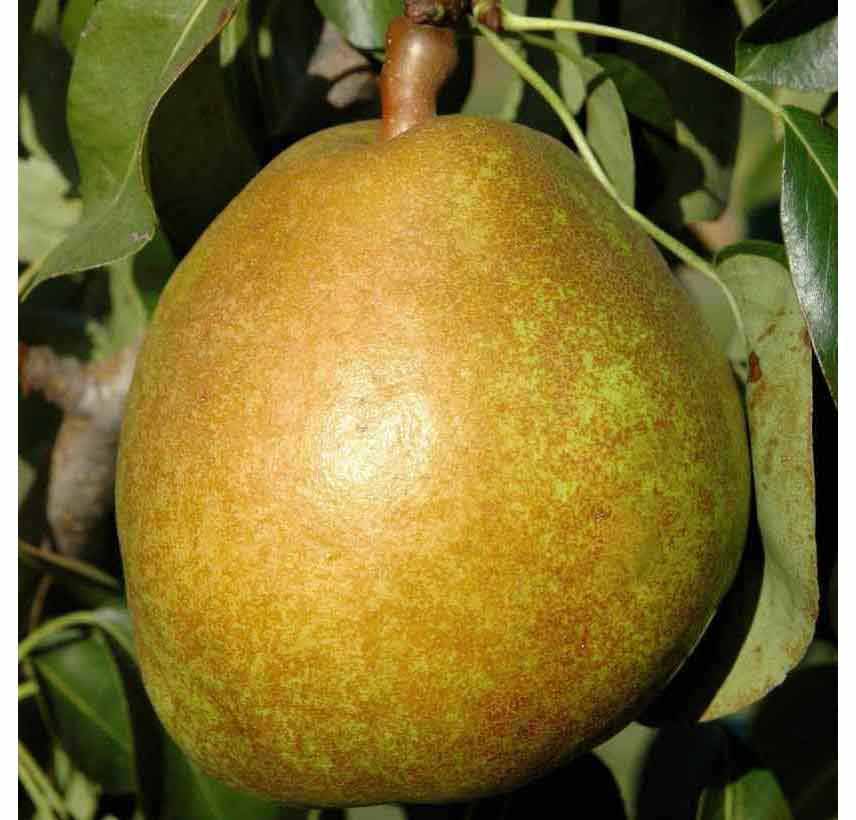
Pyrus communis ‘Angelys’
They are delicious eaten raw or why not for dessert with melted chocolate in « Poire Belle Hélène ».
Pear tree 'Delbardélice'
Easy to grow, the Pear tree ‘Delbardélice’ is a variety of high quality: disease-resistant, hardy (-15°C) with good yield. Its white flowers scent your orchard in April, its 7-centimetre bronze-yellow fruits should be harvested in September: magnificent fragrant and very aromatic pears, with fine, melting and juicy flesh. Fruit is delicate and should be consumed quickly. Its flavour stands alone and is delicious simply as a dessert to eat fresh.
It grows into a 5 m tree with a 3 m spread at ripeness.
It is not self-fertile and should be planted alongside pear tree ‘William’s’ or ‘Beurré Hardy’.
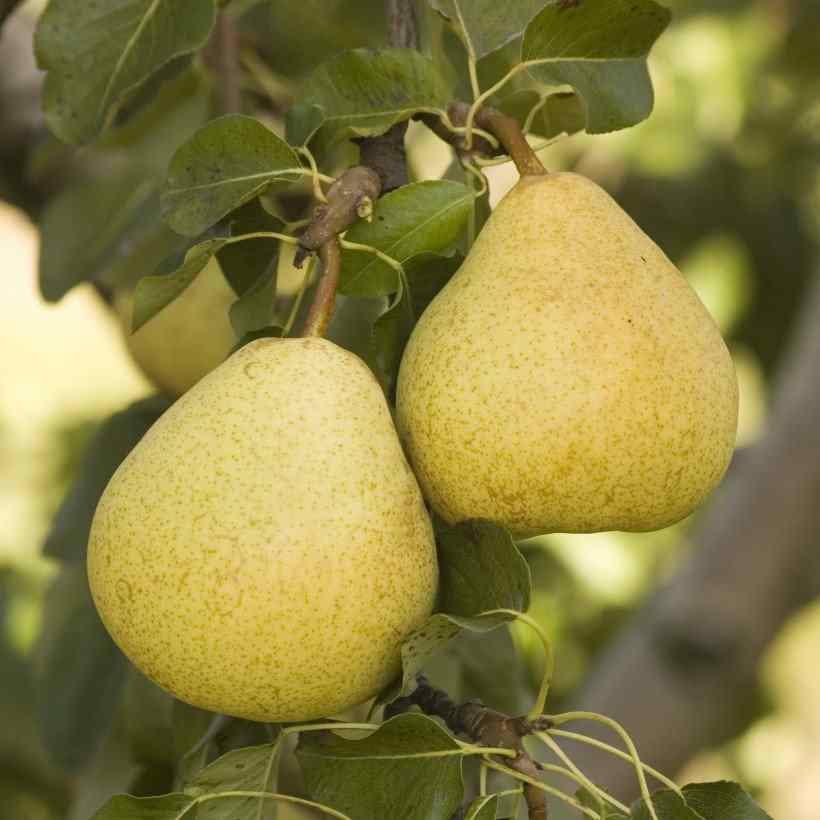
Pyrus communis Delbardelice® ‘Delété’
Note : your children will love this flavourful, sweet and naturally sugary pear.
Dwarf pear 'Garden Pearl'
Dwarf pear ‘Garden Pearl’ is perfect for container growing on a terrace, a balcony or a small garden. It produces many fruits, of sizes identical to those of a standard pear tree. Its pears are green with a mildly aromatic, melting and sweet flesh. White-pink flowers appear in late March. Fruit harvest takes place between late September and October.
It is hardy but prefers a sheltered, sunny position.
This variety is self-fertile, so no other pear tree nearby is required for pollination.
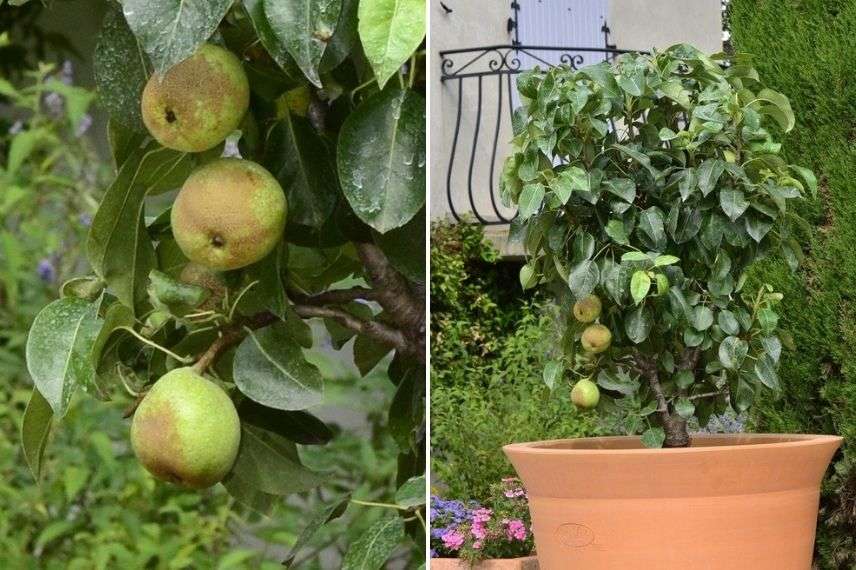
Pear tree ‘Garden Pearl’
Pears can be eaten raw, juiced or made into syrup, or used in pastries, jam or compote.
Nashi 'Shinseiki'
Nashi is a cousin of common pear tree also called “Japanese pear” or “apple-pear“. It comprises very hardy varieties (-15 to -20°C), vigorous and offering a good yield, producing pretty round, slightly flattened fruits with thick, smooth yellow-green skin. Variety ‘Shinseiki’ is vigorous and productive, producing numerous fruits with white, crunchy and juicy flesh.
Its white flowers resemble those of common pear trees, and the juicy fruits have a sweet, delicate flavour (once skin removed), can be eaten raw or cooked and keep for several months in cool storage.
Its majestic habit gives it a slender silhouette: on average 5 metres in height by 3 metres in spread at ripeness. Self-fertile, production is nevertheless improved by proximity to ‘William’s’ pear.
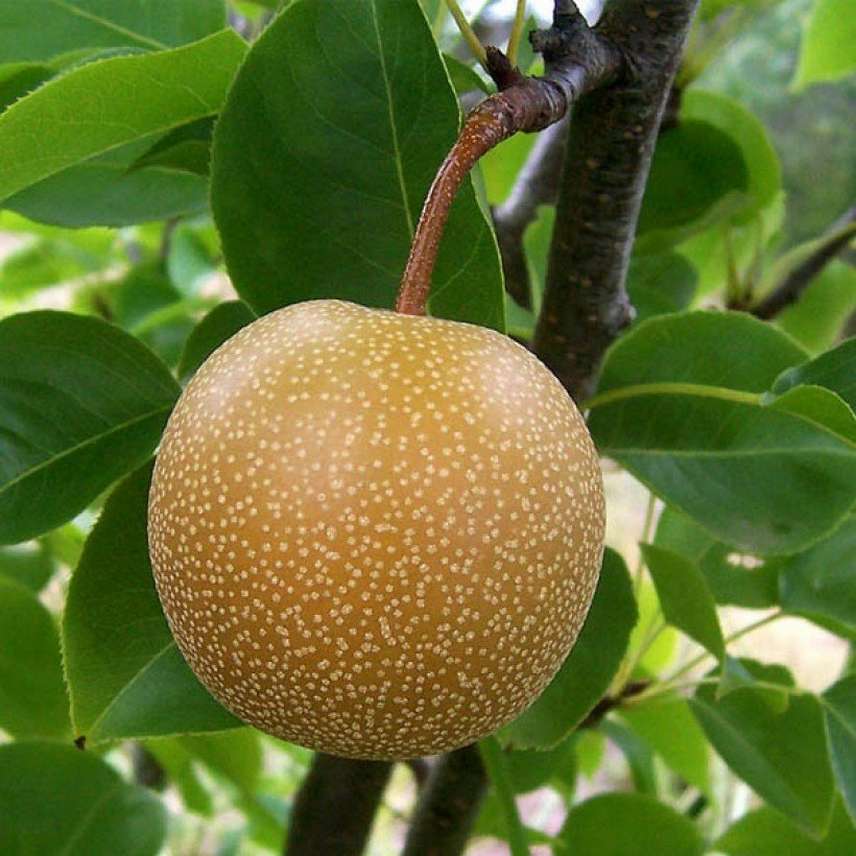
Nashi ‘Shinseki’
- Subscribe!
- Contents
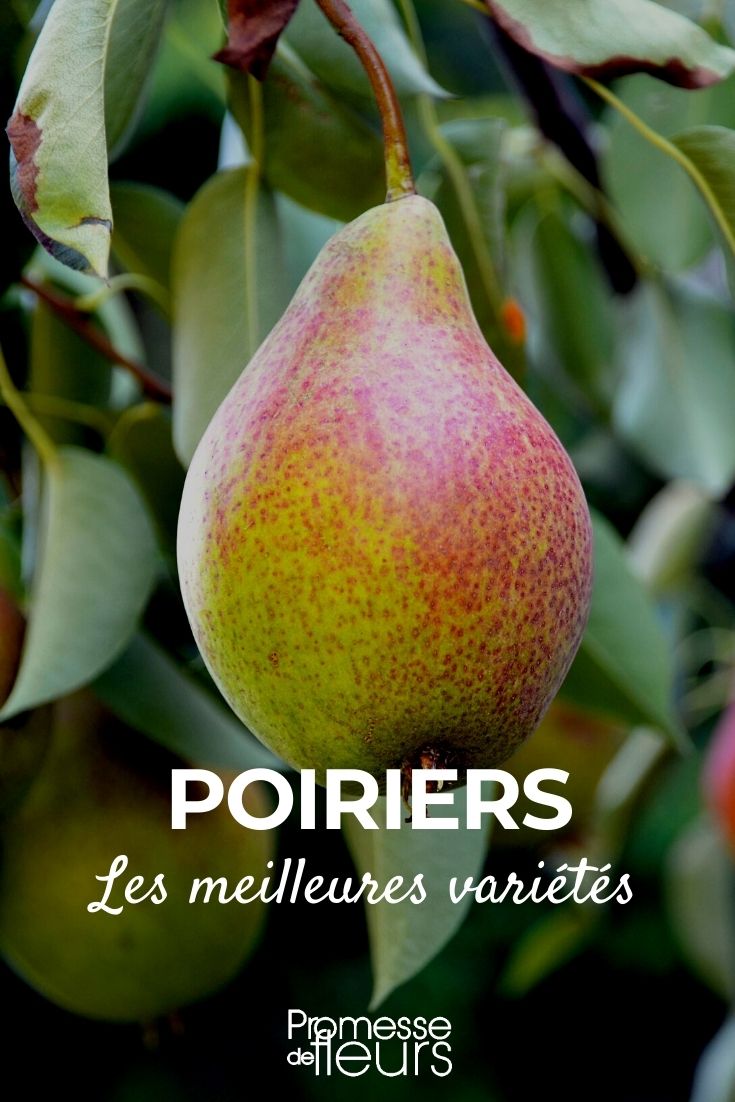































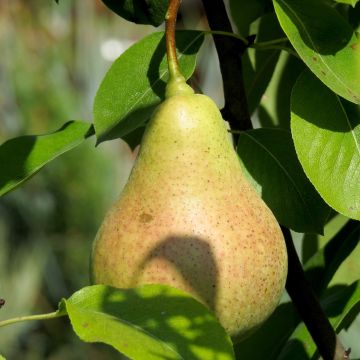
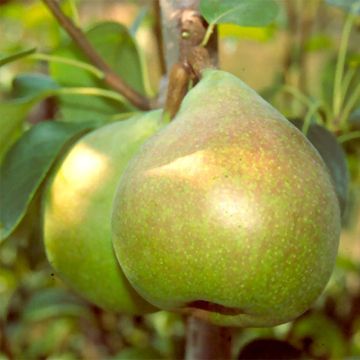
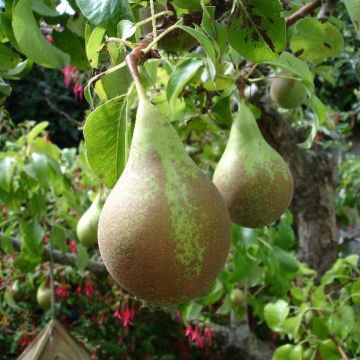
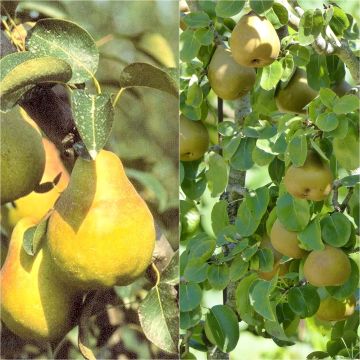
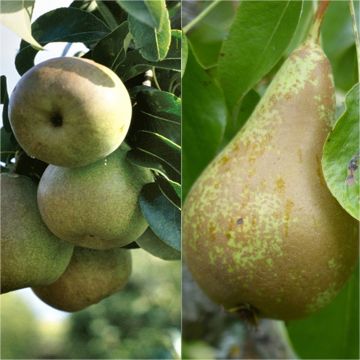
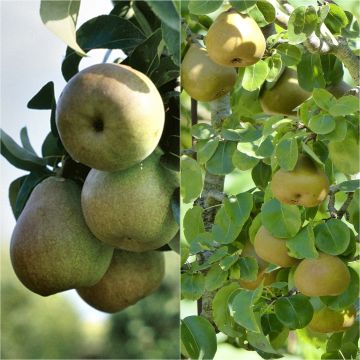
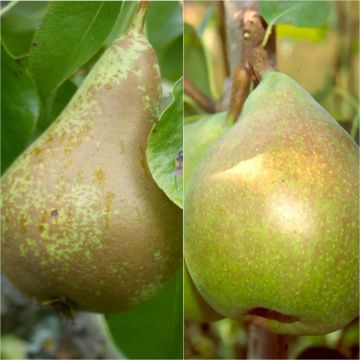
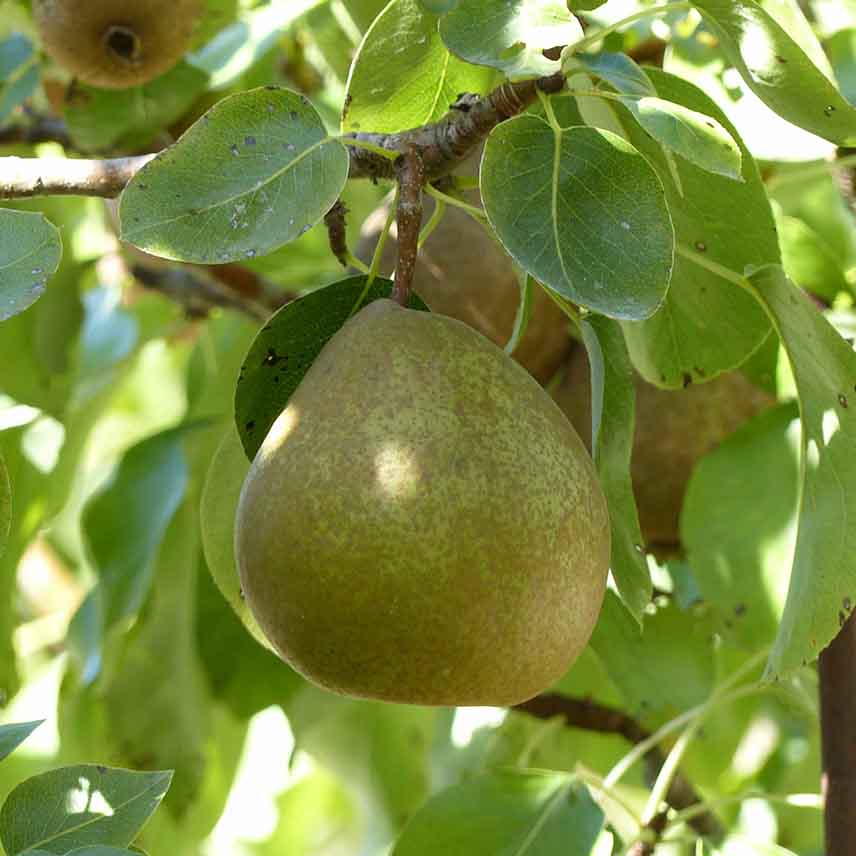
Feedbacks